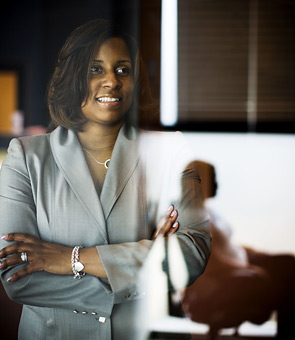
Some decades ago, the powers that be declared that employee diversity was a good thing, as desirable as double-digit profit margins. It’s proving just as difficult to achieve. Companies try all sorts of things to attract and promote minorities and women. They hire organizational psychologists. They staff booths at diversity fairs. They host dim-sum brunches and salsa nights. The most popular–and expensive–approach is diversity training, or workshops to teach executives to embrace the benefits of a diverse staff. Too bad it doesn’t work. A groundbreaking new study by three sociologists shows that diversity training has little to no effect on the racial and gender mix of a company’s top ranks. Frank Dobbin of Harvard, Alexandra Kalev of the University of California, Berkeley, and Erin Kelly of the University of Minnesota sifted through decades of federal employment statistics provided by companies. Their analysis found no real change in the number of women and minority managers after companies began diversity training. That’s right–none. Networking didn’t do much, either. Mentorships did. Among the least common tactics, one–assigning a diversity point person or task force–has the best record of success. “Companies have spent millions of dollars a year on these programs without actually knowing, Are these efforts worth it?” Dobbin says. “In the case of diversity training, the answer is no.” The law is one reason that employers favor diversity training. In the wake of whopping settlements in race-discrimination suits against large companies, including Texaco and Coca-Cola, over the past decade, employers believe that having a program in place can show a judge that they are sincerely fighting prejudice. But this too is a myth, says Dobbin: “I don’t know of a single case where courts gave credit for diversity training.” Social psychologists have many theories to explain why diversity training doesn’t work as intended. Studies show that any training generates a backlash and that mandatory diversity training in particular may even activate a bias. Researchers also see evidence of “irresistible stereotypes,” or biases so deeply ingrained that they simply can’t be taught away in a one-day workshop. Consultants on diversity insist that the training they give has value. R. Roosevelt Thomas, founder of the American Institute for Managing Diversity, says corporate America must first redefine the word. “Diversity means differences and similarities,” he says, be they in race, gender or corporate culture. He teaches executives to focus on skills and not familiarity. “In a foxhole, I want someone who can shoot,” he says. “I don’t care where they’re from. Some folks have to be reminded of that.” So what does work? The study’s findings in this area were striking too: at companies that assigned a person or committee to oversee diversity, ensuring direct accountability for results, the number of minorities and women climbed 10% in the years following the appointment. Mentorships worked too, particularly for black women, increasing their numbers in management 23.5%. Most effective is the combination of all these strategies, says Dobbin. In practice, companies find that a multipronged approach leads to results. General Electric initiated an aggressive diversity strategy under former CEO Jack Welch that included employee networks, regular planning forums, formal mentoring, and recruiting at colleges popular with minorities. Perhaps most significantly, GE appointed a chief diversity officer, Deborah Elam. In 2000, women, minorities and non–U.S. citizens made up 22% of GE’s officers and 29% of senior executives. By 2005, their ranks swelled to 34% among officers and 40% of senior execs. “Training just to train is not enough,” says Elam. “You’ve got to have accountability at the top.” Accountability for the careers of women and minorities requires a substantial commitment of time, staff and money–but so does diversity training. And only one works.